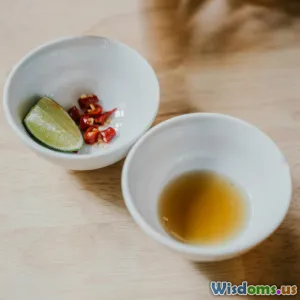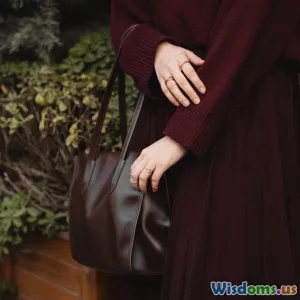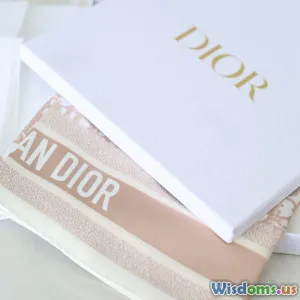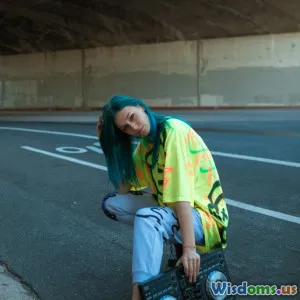
Why Organic Fabrics Are Becoming the Must Have of the Decade
9 min read Explore why organic fabrics are transforming fashion with sustainability, health benefits, and style innovation this decade. (0 Reviews)
Why Organic Fabrics Are Becoming the Must-Have of the Decade
The fashion industry is taking a monumental turn—one that is as stylish as it is sustainable. Across runways, boutiques, and consumer wardrobes, organic fabrics are fast becoming the centerpiece of modern apparel. But why is this surge more than a fleeting trend? Why exactly are organic fabrics becoming the ‘must-have’ materials for designers and consumers alike this decade? Let’s delve deep into the environmental impact, health benefits, economic implications, and evolving consumer mindset driving this shift in the fashion and beauty industries.
The Environmental Imperative: Sustainability as a Driving Force
One of the most compelling reasons behind the meteoric rise of organic fabrics is heightened environmental awareness. Traditional textile production is notorious for its resource-intensive processes, involving heavy use of water, synthetic fertilizers, pesticides, and chemicals.
-
Environmental Impact of Conventional Fabrics: For instance, the standard cultivation of cotton accounts for nearly 16% of the world's insecticide usage despite being grown on only 2.4% of global cropland, according to the World Wildlife Fund (WWF). Textile dyeing and treatment also contribute to roughly 20% of water pollution globally.
-
Organic Fabric Benefits: Organic fabrics—such as organic cotton, linen, hemp, and silk—are cultivated without synthetic chemicals, using natural fertilizers and pest controls that maintain soil health and reduce pollution. For example, according to the Textile Exchange’s 2022 Preferred Fiber and Materials Market Report, organic cotton cultivation reduces water usage by up to 91% compared to conventional cotton.
-
Circularity and Biodegradability: Organic textiles often exhibit better biodegradability, helping curb the massive problem of microplastic pollution originating from synthetic textile fibers like polyester. Brands like Patagonia and Eileen Fisher emphasize organic and biodegradable fabrics to reinforce a circular economy within fashion.
These environmental wins are not abstract. They reflect consumers’ growing demand for products that align with sustainable living and reduce their carbon footprint.
Health & Skin Benefits: Apparel as Self-Care
Beyond the environment, organic fabrics hold increasing appeal for consumers focused on health and well-being.
-
Chemical-Free Comfort: Wearing conventional fabrics often means coming into contact with residues of pesticides, formaldehyde, and azo dyes, substances linked to skin irritations, allergies, and even long-term health risks. On the other hand, garments made from organic fabrics undergo rigorous certification processes (like GOTS – Global Organic Textile Standard), ensuring virtually no toxic chemical residues.
-
Breathability and Skin Sensitivity: Natural fibers from organically grown plants like cotton or hemp maintain superior breathability and moisture-wicking properties, ideal for sensitive skin. New research published by the Journal of Dermatological Treatment (2020) highlights patients with atopic dermatitis experiencing relief when switching to organic cotton fabrics.
-
Hypoallergenic Appeal in Beauty and Sleepwear: The cross-pollination between fashion, beauty, and wellness sectors magnifies the importance of organic cotton and silk in lingerie and sleepwear. Luxury brands such as Coyuchi and Cariloha promote organic textiles as healthier alternatives for bedtime—key to overall skin rejuvenation and comfort.
This intersection of fashion and health is a fresh paradigm where fabric choices empower consumers beyond aesthetics.
Style Meets Substance: Innovation in Fashion Design
Fashion no longer operates solely on aesthetics but integrates environmental ethics and health-conscious materials. The creative possibilities embedded in organic fabrics are richer than many realize.
-
Textural Variety and Dyeing Techniques: Unlike the myth that natural fabrics are dull, contemporary designers celebrate the unique textures and durability of organic linen, bamboo, and hemp blends. Hand-dyeing with botanical dyes further elevates the earthy appeal while cutting down on synthetic chemical use.
-
Leading Designer Initiatives: High-profile designers such as Stella McCartney and Gabriela Hearst have pioneered collections using organic fabrics with runway success, demonstrating the material’s luxurious potential. For example, McCartney’s Spring/Summer 2023 collection prominently featured organic cotton and linen, lauded for their craftsmanship and sustainability.
-
Consumer Willingness to Invest: According to a 2023 survey by NielsenIQ, 73% of millennials and Gen Z consumers said they are willing to pay more for sustainable products, positioning organic fabric-wear as both a style and status symbol.
The culmination of health consciousness, environmental responsibility, and design innovation paves the way for organic fabrics to dominate fashion’s future.
Economic and Ethical Considerations
The rise of organic fabrics echoes wider movements around ethical production and fair trade.
-
Supporting Farmers and Workers: Certified organic textile production often ensures better wages, safer working environments, and prohibits exploitative labor practices. Many organic fabric initiatives partner with local communities, helping farmers shift away from toxic pesticides to regenerative agriculture.
-
Transparency and Certification: Consumers increasingly demand transparency. Certifications such as Fair Trade USA, OEKO-TEX, and GOTS provide guarantees that the fabric’s entire lifecycle maintains social and environmental integrity.
-
Long-Term Investment Over Fast Fashion: While initially branded as premium-priced, organic fabric garments often boast superior durability, making them cost-effective long-term investments, contributing to a slow fashion mindset.
This economic and ethical reconfiguration within fashion not only redefines production practices but also invites consumers to reconsider purchasing habits.
Conclusion: Embracing the Organic Fabric Revolution
The ascent of organic fabrics within fashion and beauty sectors is far more than a trend—it represents a systemic shift towards sustainability, well-being, and ethical accountability. As consumers become more informed and values-driven, they demand apparel that doesn’t just look good but does good.
From reducing harmful environmental impacts and promoting healthier lives to fostering innovation and fair labor, organic fabrics encapsulate an integrated approach to conscious fashion. Whether you're a fashion enthusiast, environmental advocate, or health-conscious consumer, investing in organic fabrics is becoming not just desirable but essential.
The decade ahead promises to be woven with threads of organic textiles, signaling a smarter, cleaner, and more compassionate fashion future. Your wardrobe can be a powerful agent of this transformation. The choice is yours—step into the organic fabric revolution and wear the future.
References
- Textile Exchange, Preferred Fiber & Materials Market Report 2022
- World Wildlife Fund, Cotton and the Environment
- Journal of Dermatological Treatment, "Organic Cotton Effects on Skin Conditions," 2020
- NielsenIQ, Consumer Sustainability Survey 2023
- Official GOTS certification guidelines
- Stella McCartney Spring/Summer 2023 Collection Reviews
Rate the Post
User Reviews
Popular Posts





















